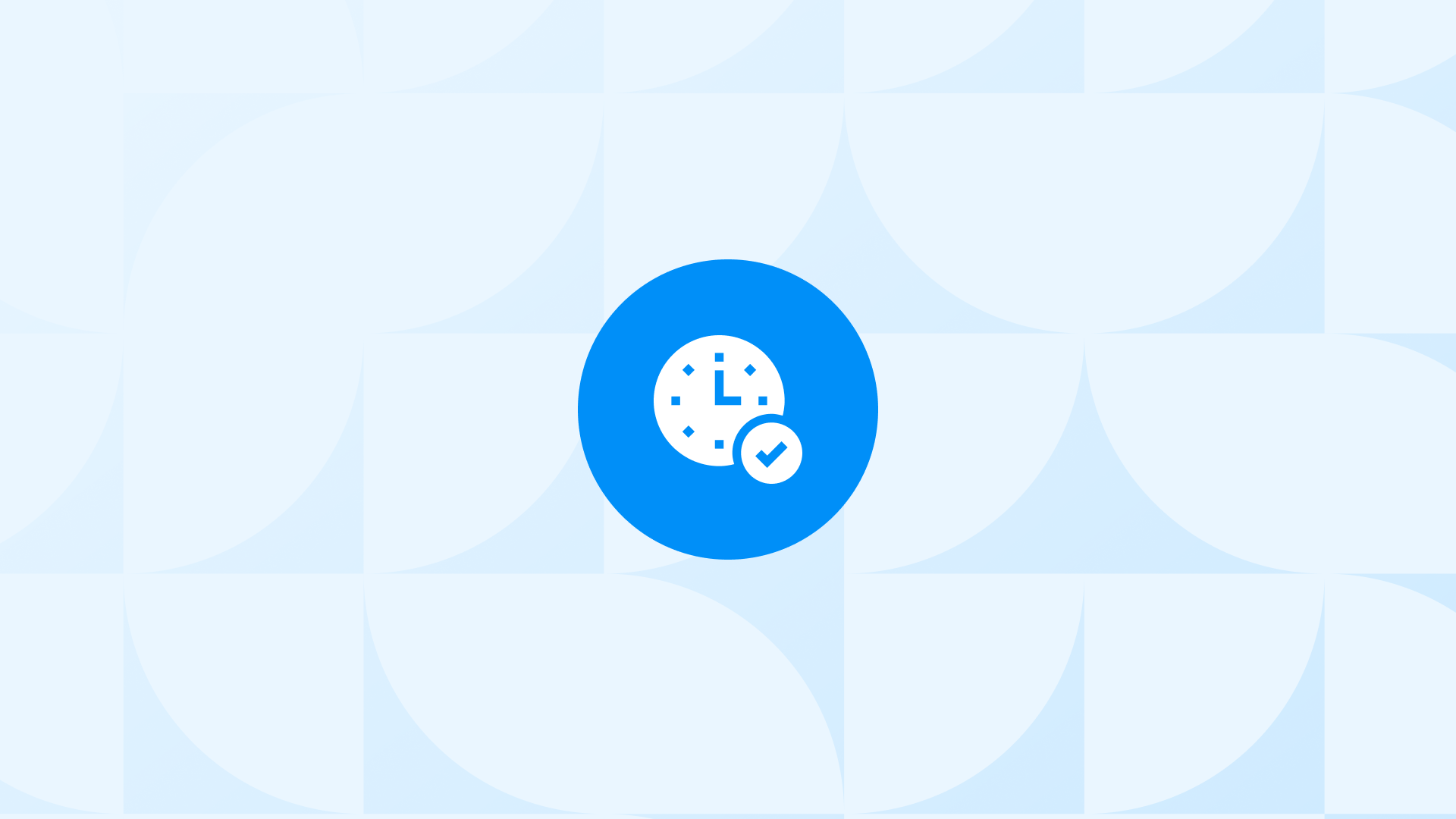Email is one of the most reliable ways to reach people and build sales pipelines.
In 2023, the global email user base reached 4.37 billion, expected to grow to 4.89 billion by 2027.
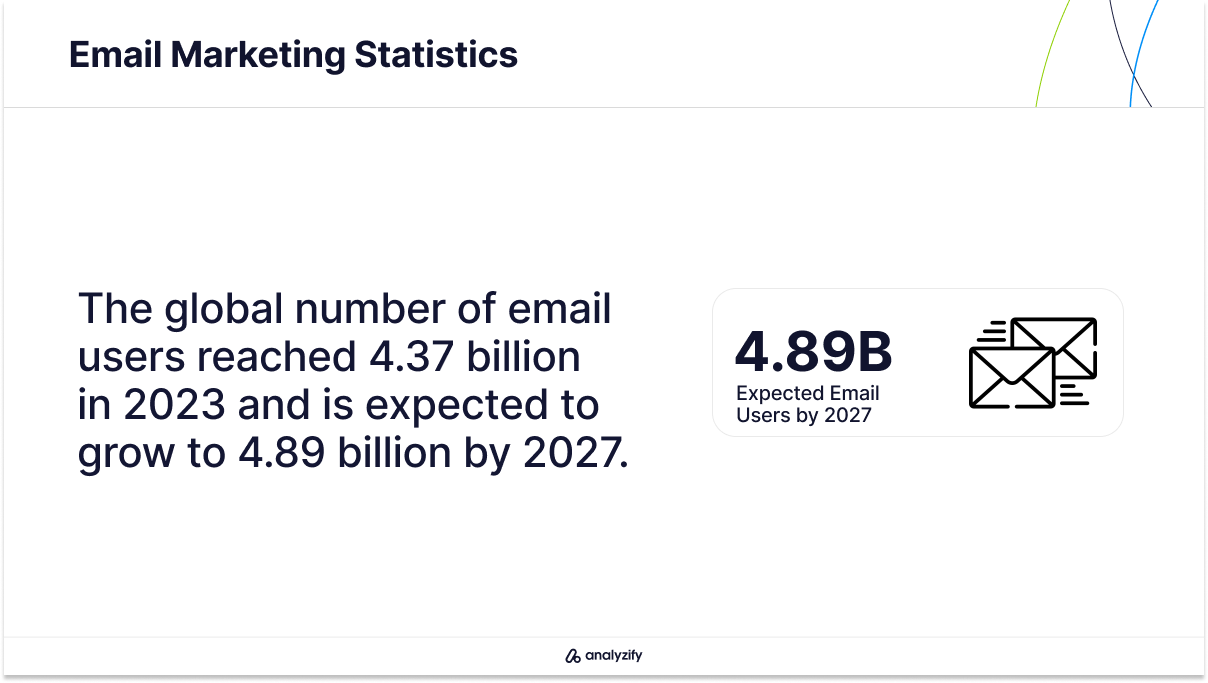 But sometimes even the best prepared email can go unnoticed if it’s sent at the wrong time.
But sometimes even the best prepared email can go unnoticed if it’s sent at the wrong time.
In this guide, you’ll learn everything you need to know about the best times to send emails:
- The best days and times to schedule your emails
- Optimal calendar dates for effective email campaigns
- Industry-specific email timing strategies
- The times you should avoid sending emails
…and plenty more to optimize your email marketing!
Email Marketing Terms You Should Know
Before we begin, here are 10 simple email marketing terms to help you understand logic of the best times to send email campaigns:
- Open Rate: The share of people who open your email. A higher open rate means your email timing is effective.
- Click-Through Rate (CTR): The portion of people who click a link in your email. Good timing can help increase clicks.
- Bounce Rate: The fraction of emails that don’t reach the recipient’s inbox. A lower bounce rate helps your emails perform better.
- Conversion Rate: The proportion of readers who take an action, like making a purchase, after opening your email.
- Email List: A collection of email addresses from people who want to receive updates from you. A healthy list leads to better results.
- Segmentation: Dividing your email list into smaller groups based on traits, like location or behavior, to send emails at the right time.
🎯 Bonus Content: Need help creating better campaigns? See our list of the Best Email Marketing Agencies in the UK to partner with the best.
When Are People Most Likely to Check Their Email?
If you’re wondering when people are most likely to check their email, weekdays are the clear winner.
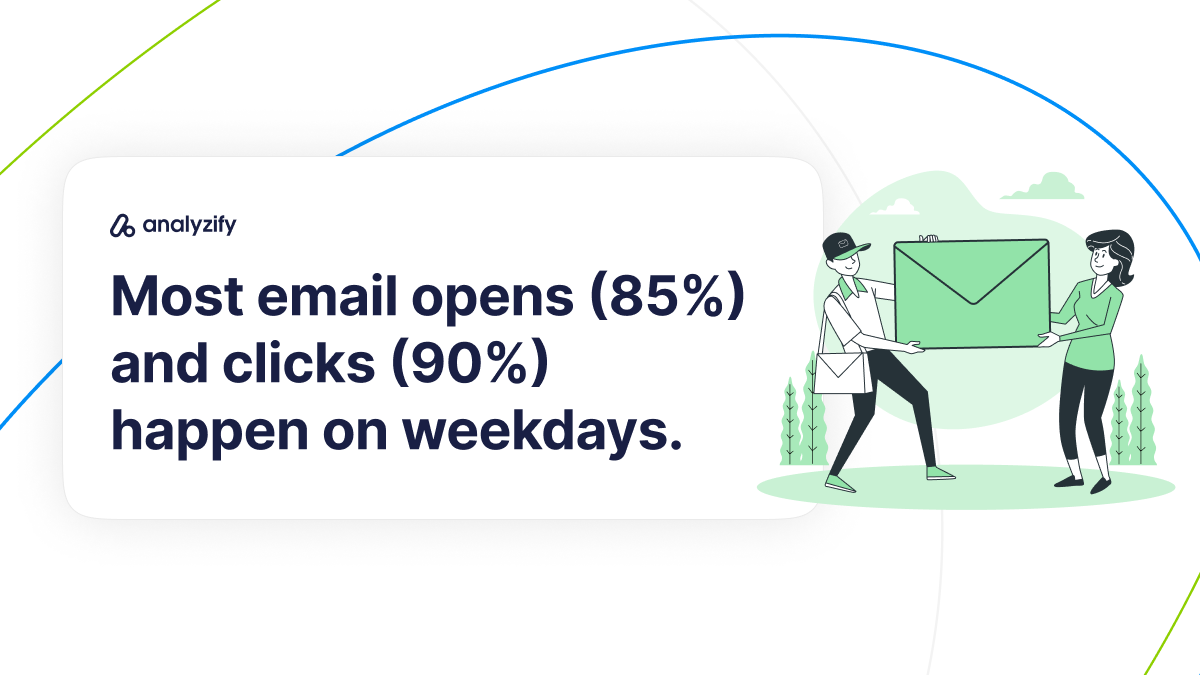
Source: Brevo
Data reveals that email engagement is significantly higher during the workweek:
- More than 85% of marketing emails that were opened were sent on weekdays.
- Over 90% of emails that received clicks were delivered during weekdays.
Weekdays work better because people are more engaged with their inboxes as part of their regular routines.
Many check emails during work hours, lunch breaks, or after their morning commute. These times are often when people are actively looking for updates, work-related information, or promotional offers.
On the other hand, weekends are less reliable for email engagement. People tend to be offline, focusing on personal activities or spending time with family and friends.
What Are the Best Days to Send Emails?
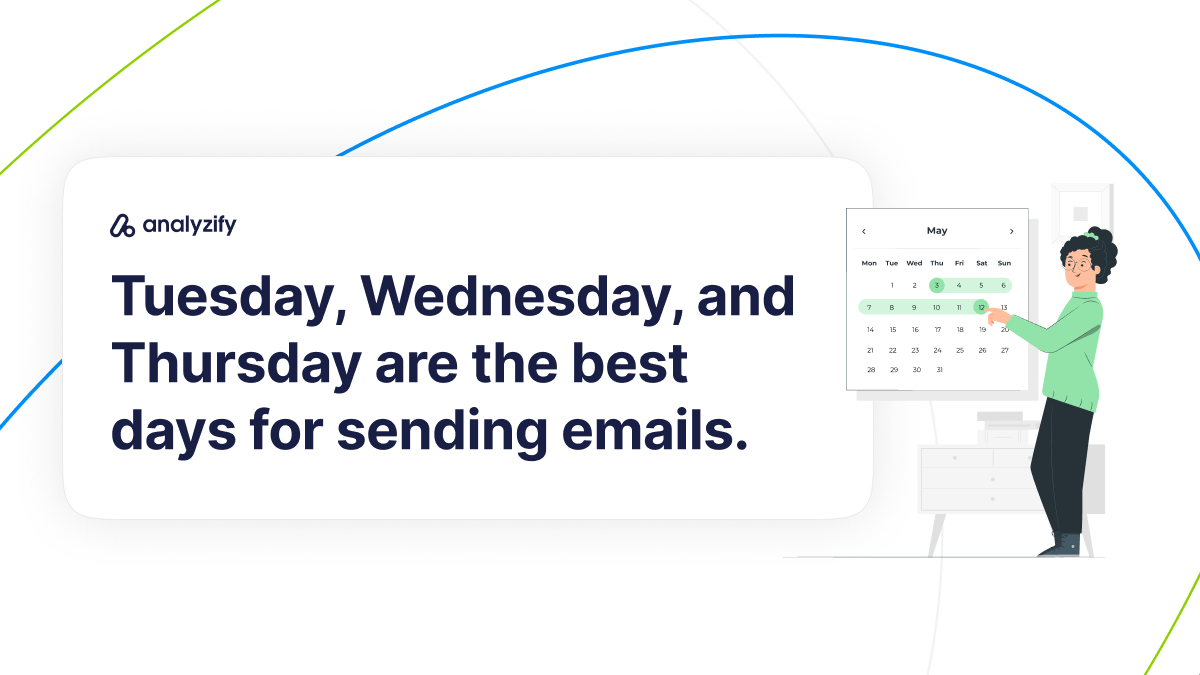
The middle of the week—Tuesday, Wednesday, and Thursday—are the best times to send emails.
These days often have higher engagement because people are settled into their routines and actively checking their inboxes.
Mondays can be too busy, with people catching up on tasks, and Fridays are often focused on wrapping up work or planning the weekend.
🎯Bonus Content: See our post on the Best Times To Post On Instagram and increase your chances of going viral on social media!
Best Times to Send Emails for Higher Open Rates
Finding the best times to send email campaigns is key to boosting engagement.
While weekdays are generally better, certain days and dates stand out for better performance.
General Best Times to Send Emails
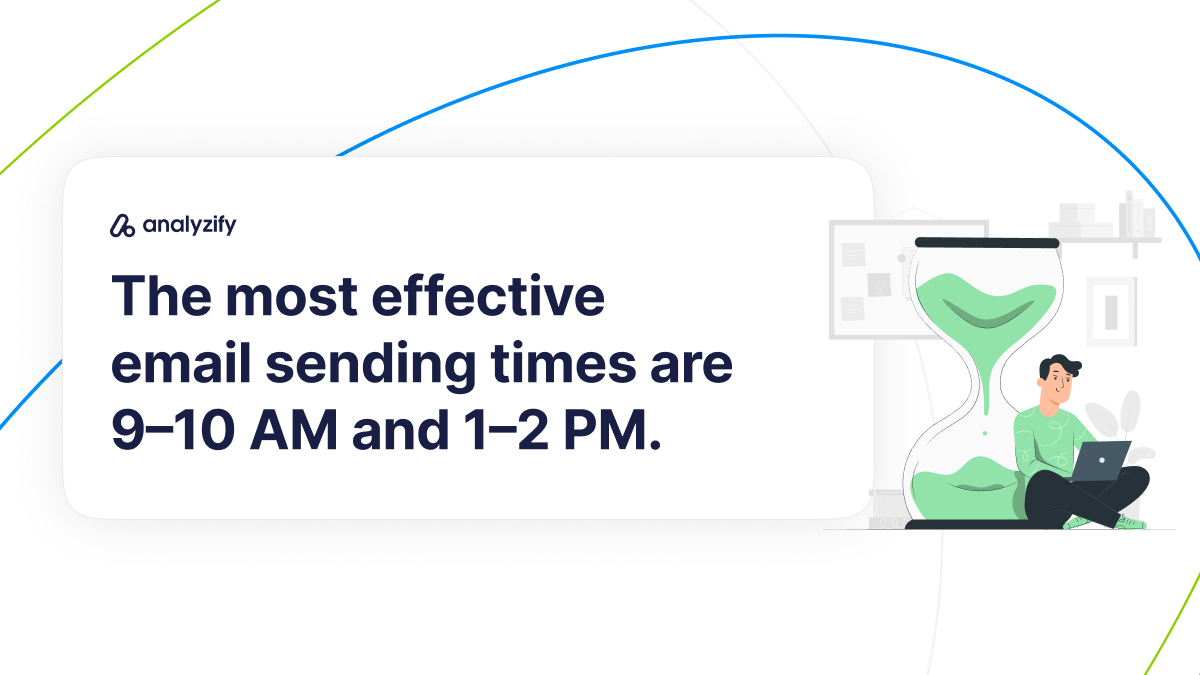
Source: Moosend
While different times of the day perform well, 9–10 AM and 1–2 PM stand out as the general best time periods to send emails.
Of these, 1–2 PM is the most effective time to send email campaigns.
This window aligns with natural breaks in people’s routines, such as lunch or post-lunch browsing, making it an ideal time to engage your audience.
Best Time Periods to Send Emails
Sending emails at times when people are most likely to check their inboxes increases the chances of them being opened, clicked, and acted upon.
Let’s break down the best times to send an email:
What Time is Best For Sending Emails in the Mornings?
Open rates start climbing in the morning as people settle into their day.
Between 9–10 AM, open rates average 21.35%.
Many people begin their workday by catching up on emails, making this a great time to send messages that need attention early in the day.
What Time is Best For Sending Emails in the Noons?
Midday is the best-performing time for email campaigns, with open rates peaking at 22.09%.
During lunch breaks or just after eating, people often check their emails, making this the prime time to grab their attention.
If you’re launching an important campaign, this time frame offers the highest engagement potential.
What Time is Best For Sending Emails in the Afternoons?
Open rates remain strong later in the day, averaging 20.74% between 5–6 PM.
As people finish their workday or commute home, they often use this time to go through their inbox.
It’s a great window for follow-ups or casual emails that don’t demand immediate action.
Best Calendar Dates to Send Emails
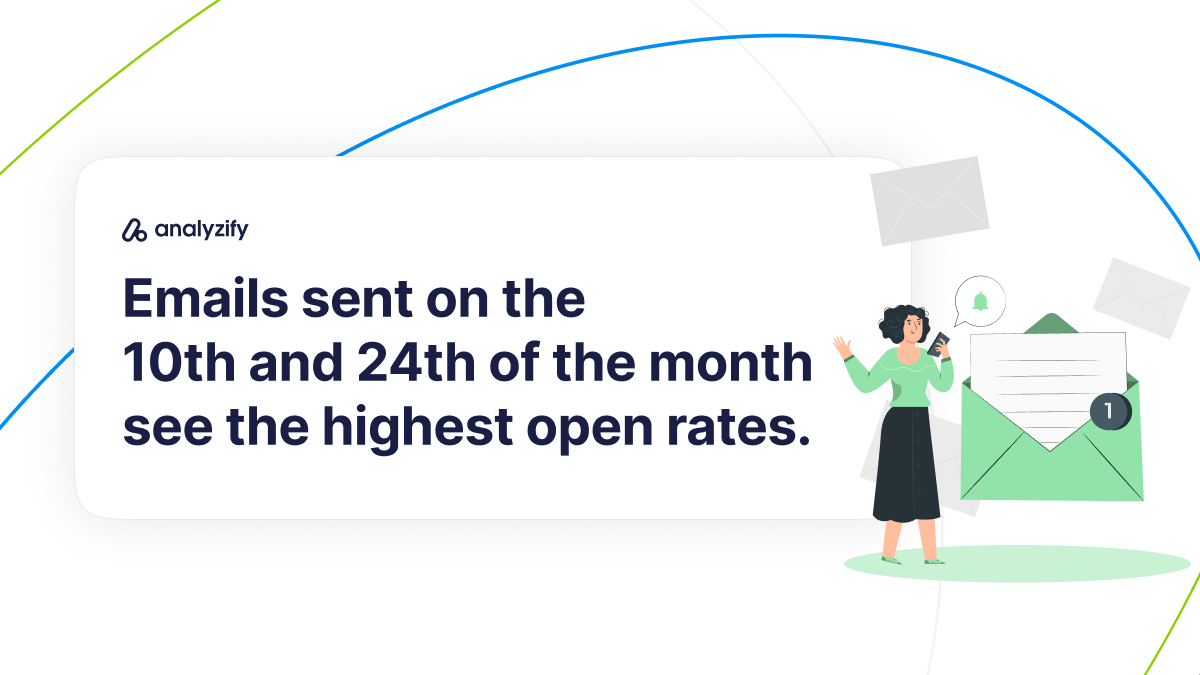
Source: Omnisend
If you want to go a step further, specific dates within the month can offer even better results:
- Best Dates To Send Emails for Open Rates: Emails sent on the 10th and 24th of the month tend to have the highest open rates. These dates may align with mid-month routines or less cluttered inboxes.
- Best Dates To Send Emails for Click-Through Rates: For more clicks, send your emails on the 2nd and 26th of the month. These dates might capture early-month energy or pre-end-of-month decision-making.
- Best Dates To Send Emails for Conversion Rates: The 1st and 30th day of the month are the best days for driving conversions. These dates may align with financial cycles, like paydays or end-of-month budget considerations.
Optimal Email Send Times by Industry
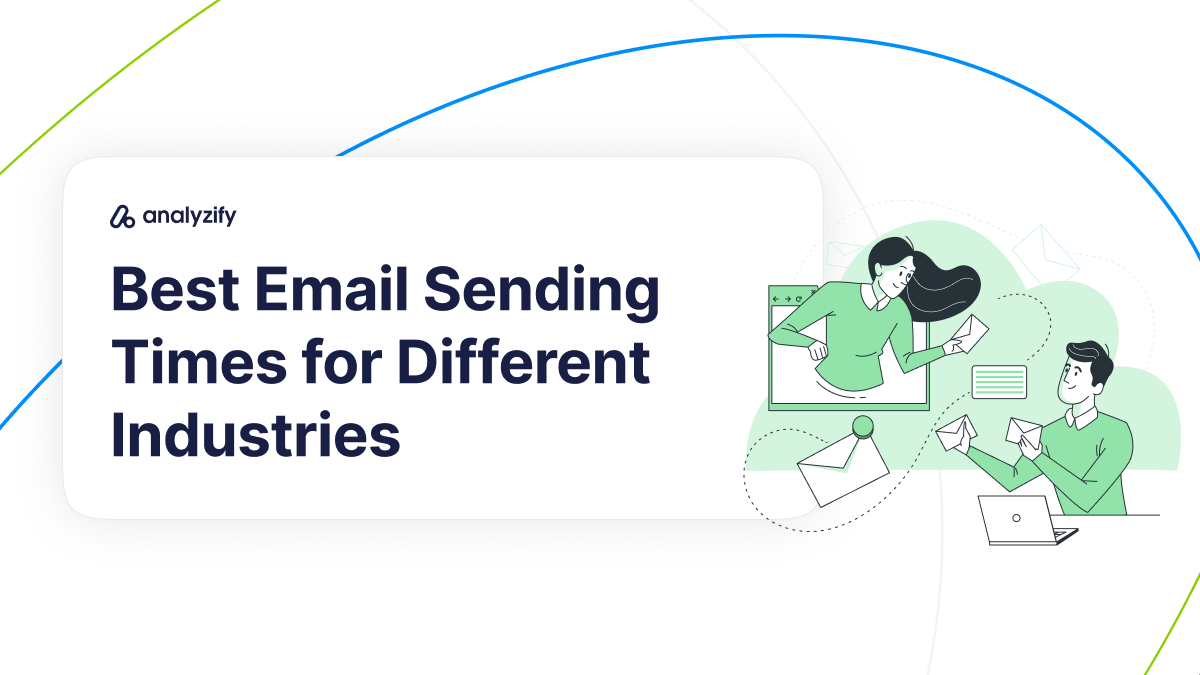
Different industries have unique email engagement patterns.
Understanding these can help you identify the best times to send email campaigns for your business. Here’s a breakdown of optimal email times by industry:
Best Times to Send Emails for Ecommerce
- Best Day To Send Emails for Ecommerce: Tuesday or Thursday
- Best Times To Send Emails for Ecommerce: 10:00 AM
Ecommerce shoppers tend to check their emails early in the day, especially during work breaks. Sending emails at mid-morning aligns with their browsing habits, increasing the chances of clicks and purchases.
Optimal Timing for Software/SaaS Email Marketing
- Best Day To Send Emails for SaaS: Tuesday or Thursday
- Best Times To Send Emails for SaaS: 2:00–3:00 PM
Professionals using SaaS tools are often busiest in the morning. By the afternoon, they have more time to engage with emails, making this window perfect for sharing updates, tutorials, or special offers.
Prime Email Sending Hours for Marketing Services
- Best Day To Send Emails for Marketing: Wednesday
- Best Times To Send Emails for Marketing: 4:00 PM
Midweek afternoons are a sweet spot for marketers who are actively planning and brainstorming. Sending emails at this time ensures they notice your message while organizing their tasks.
Best Hours to Send Emails in Offline Retail/Hospitality
- Best Day To Send Emails for Retail/Hospitality: Thursday
- Best Times To Send Emails for Retail/Hospitality: 8:00–10:00 AM
Early morning emails help offline retailers and hospitality businesses reach customers as they plan their weekends. Deals and promotions sent during this time are more likely to catch their attention.
Top Email Sending Times for Professional Services (B2B)
- Best Day To Send Emails for B2B: Monday or Tuesday
- Best Times To Send Emails for B2B: 8:00–10:00 AM
B2B audiences are most productive early in the week. Sending emails during this period helps position your message as part of their planning, ensuring higher engagement.
When to Send Emails for Nonprofits
- Best Day To Send Emails for NGO’s: Tuesday or Thursday
- Best Times To Send Emails for NGO’s: 3:00–4:00 PM
Nonprofit supporters often check their emails in the afternoon, making it the best times to send updates, donation requests, or campaign news. This timing aligns with their post-lunch breaks and late-day routines.
Ideal Email Send Times for Food and Beverage Industry
- Best Day To Send Emails for F&B: Friday or Saturday
- Best Times To Send Emails for F&B: 11:00 AM–1:00 PM
For food and beverage businesses, late mornings and early afternoons work best, especially on Fridays and Saturdays.
This timing captures attention as people plan meals, dining out, or grocery shopping for the weekend.
Sending promotional offers, menus, or reservation reminders during these hours can maximize engagement.
🎯Bonus Content: Learn the Best Times to Post on TikTok and make your content stand out on social media!
The Worst Times to Send an Email
Knowing the worst time to send email campaigns can help you avoid low engagement and wasted effort.
Poor timing can lead to unopened emails and missed opportunities.
Worst Email Sending Days
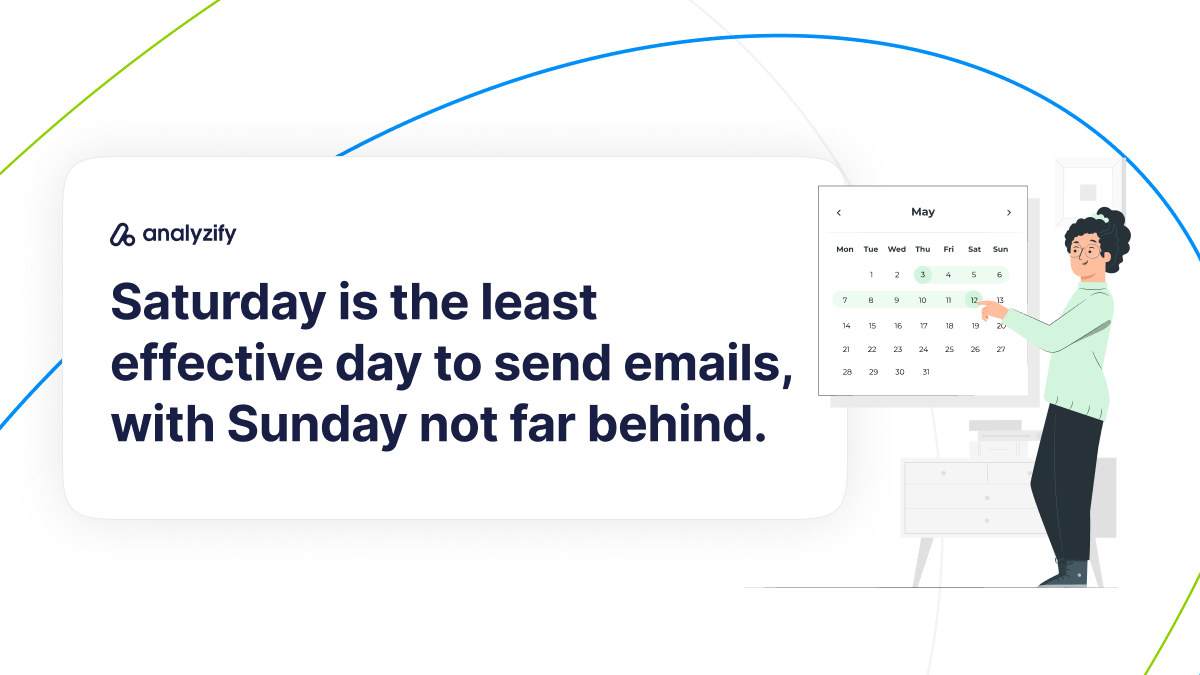
Saturday is often the worst day to send emails, followed closely by Sunday.
Over the weekend, people focus on personal activities and may not check emails. However, this can vary for sectors with specific working patterns, such as:
- Operating on Weekends: Industries that maintain weekend shifts or services, providing opportunities for email engagement during downtime.
- Running 24-Hour Production: Factories and facilities with round-the-clock production schedules, where employees may check emails during shift changes or breaks.
- Offering Continuous Customer Service: Businesses with support teams or operational staff working through the weekend, often with moments to engage with emails during quieter hours.
- Managing Healthcare or Emergency Operations: Sectors with essential weekend work, where professionals might check emails between responsibilities.
- Supporting Retail or Hospitality Workflows: Teams working in retail, food services, or hospitality, often active on weekends with opportunities to interact with email promotions or updates.
Worst Time Slots to Send Emails
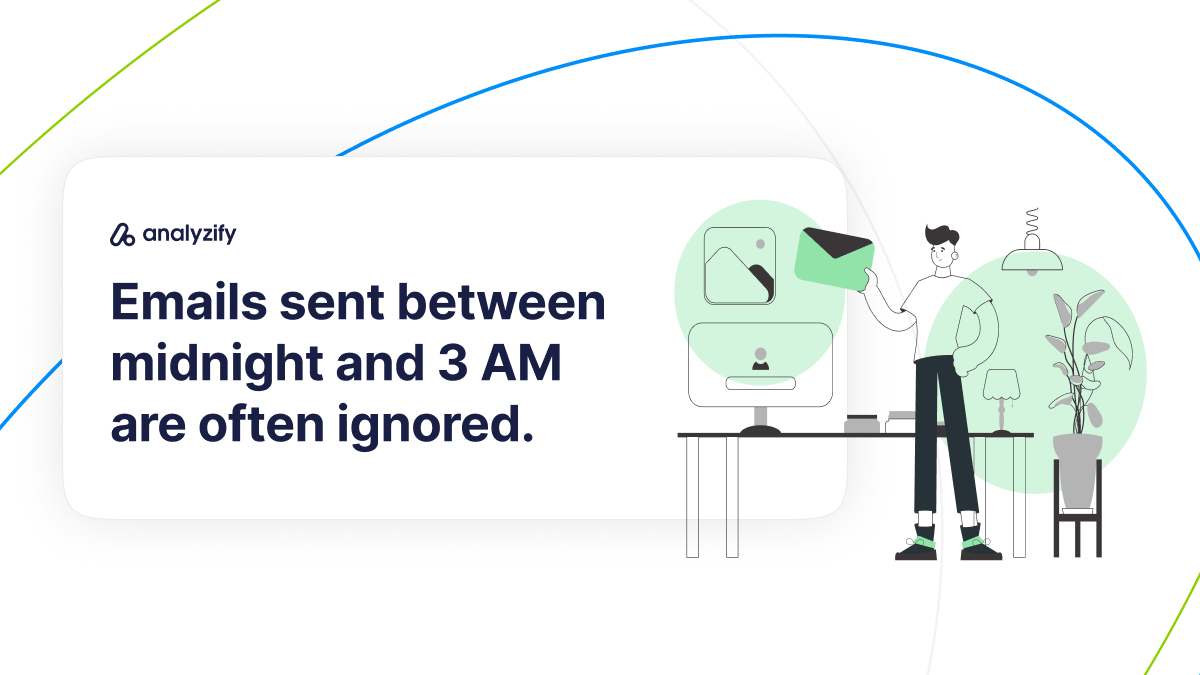
Certain time slots consistently underperform for email campaigns on weekends:
- Midday (12–3 PM): This is when people are most occupied with work tasks, meetings, or lunch breaks, making them less likely to open emails.
- Early Morning (Midnight–3 AM): Emails sent during these hours are often ignored. By the time recipients check their inboxes, your message may be buried under a pile of newer emails.
Avoid these time frames to prevent your emails from getting lost or overlooked.
Understanding the worst time to send an email to get a response is just as critical as identifying the best times to send emails.
FAQ: The Best Times to Send Emails
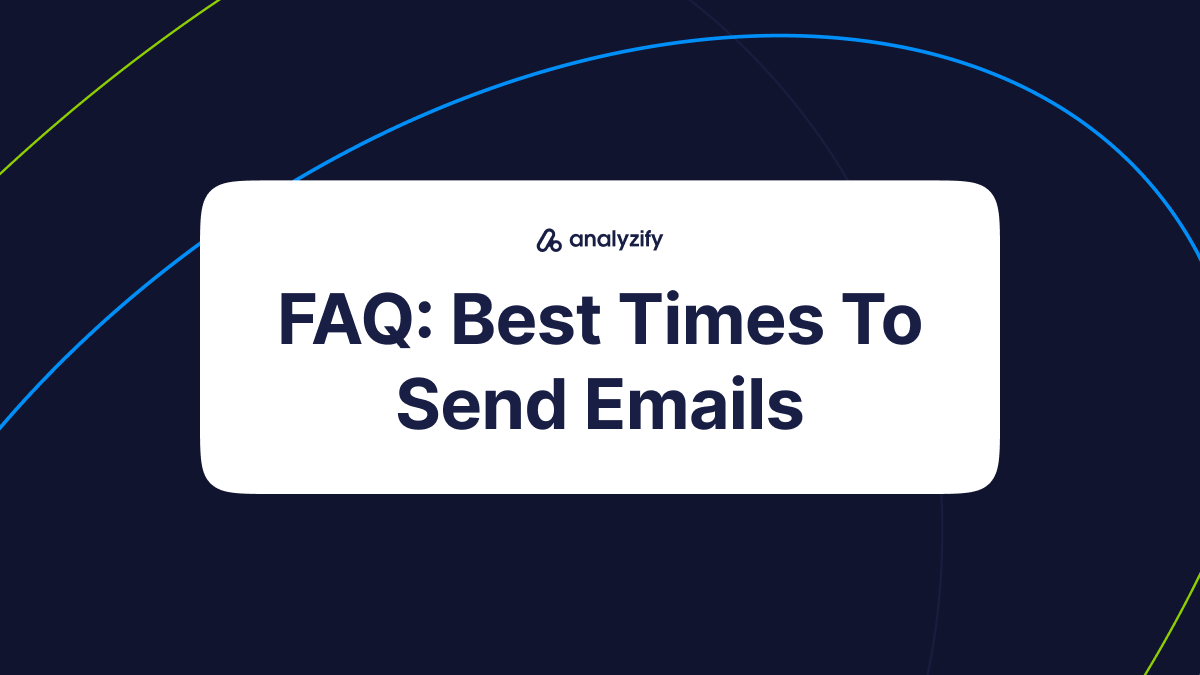
Here are answers to some of the most commonly asked questions about the best times
to send email campaigns:
What is the best time to send an email to get a response?
The best times to send an email to get a response are typically 9–10 AM and 1–2 PM. These windows align with natural breaks in people’s routines, such as starting their workday or taking a lunch break. Emails sent during these times are more likely to be seen and opened when the recipient is actively engaging with their inbox. Testing these times with your audience can help refine your strategy further.
Which days are best for sending email campaigns?
The middle of the week—Tuesday, Wednesday, and Thursday—are the best days to send email campaigns. These days consistently perform better because recipients are often settled into their weekly routines and actively checking their inboxes. Monday can be hectic, as people are catching up on tasks from the weekend, while Fridays are typically focused on wrapping up the week or planning for the weekend.
What is the worst time to send an email to get a response?
The worst times to send an email are typically 12–3 PM and midnight–3 AM. Midday often sees lower engagement as people are occupied with work tasks, meetings, or lunch. Emails sent in the early morning hours are usually ignored because recipients are asleep. By the time they check their inbox, your message may be buried under newer emails, reducing its visibility and effectiveness.
What are the best calendar dates to send email campaigns?
Certain dates within the month perform better for email campaigns. For higher open rates, aim for the 10th and 24th, as these days often align with less crowded inboxes. To maximize clicks, send emails on the 2nd and 26th, capturing early- and late-month momentum. For conversions, focus on the 1st and 30th, which often coincide with paydays or end-of-month decision-making cycles.
What is an open rate?
An open rate is the percentage of recipients who open your email after it’s delivered. It is calculated by dividing the number of email opens by the total number of emails sent (excluding bounces). High open rates indicate that your subject line, timing, and audience targeting are effective. For example, sending emails at optimal times, like 9–10 AM or 1–2 PM, can improve your open rates.
What are the best times to send emails for ecommerce?
For ecommerce businesses, the best times to send emails is 10:00 AM on Tuesday or Thursday. These times align with customer habits of browsing during work breaks or planning purchases. Mid-morning emails are effective for promoting sales, special offers, or product launches when customers are actively engaging with their inboxes.
What are the best times to send emails for software/SaaS email marketing?
For software or SaaS companies, the ideal time to send emails is 2:00–3:00 PM on Tuesday or Thursday. Professionals often check emails in the afternoon when they have completed their morning tasks and have time to engage with product updates, tutorials, or service promotions.
What are the best times to send emails for B2B?
For B2B businesses, the best times to send emails is 8:00–10:00 AM on Monday or Tuesday. Early in the week, professionals are focused on planning and prioritizing tasks, making them more receptive to new opportunities and offers. Emails sent during this time are likely to be opened and acted upon as part of their workday routine.
Is email marketing still effective?
Yes, email marketing remains highly effective. With 4.37 billion email users globally in 2023, and this number expected to grow to 4.89 billion by 2027, email continues to offer businesses a direct and measurable way to reach their audience. When timed correctly, email campaigns can generate high open rates, click-throughs, and conversions, making it one of the most reliable marketing tools.
Does the industry affect the best times to send marketing emails?
Yes, the best times to send marketing emails varies by industry. For example, ecommerce emails perform best in the mid-morning on weekdays, while B2B emails see higher engagement early in the week during work hours. Understanding your audience’s habits within your specific industry is essential to identifying the best times to send email campaigns. Regular testing and analysis can help refine your approach.
Conclusion
Timing is a critical factor in the success of email campaigns.
By understanding when your audience is most active—whether by day, time, or industry—you can significantly improve engagement and response rates.































